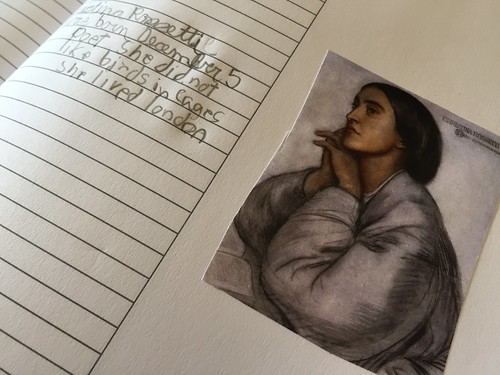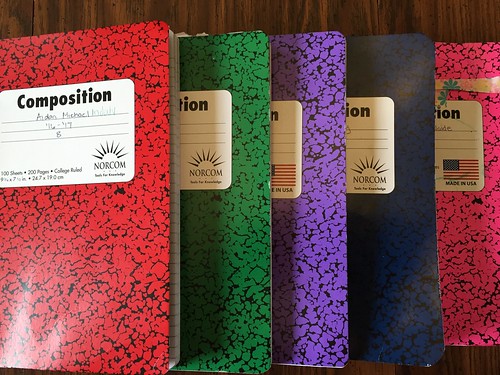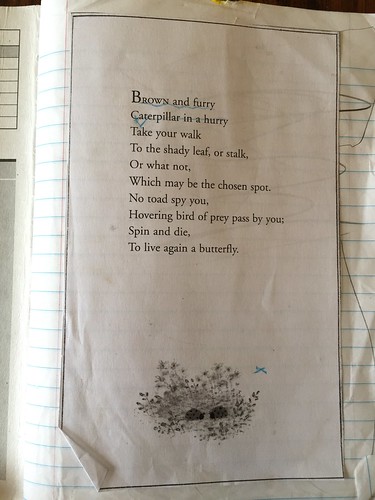A few weeks ago, a friend stopped by to pick my brain about “going deep” in our studies. If there is one thing the Montessori method does extremely well it is to dig deep into the corners of a subject and expose new information even for the guide. My friend was looking for tips on how to add depth to her curriculum when there are so many things that she wants to cover each year and was facing a broad range of students.
This has been a struggle for me in implementing what I consider to be the full Montessori curriculum. Realistically I just can’t do it properly for everyone, so instead I take bits and pieces from the Classical, Charlotte Mason, and Unit Study approaches and use Montessori philosophy and techniques to make it work.
Here is one example of a way we go deep using this approach.
When it comes to going deep in language study. These are the key.
I know it sounds both silly and overly simple, but matching composition notebooks seem to make all of the difference when it comes to language study. Even Lucie has one, although it contains more… shall we say… expressive…. works.
For this study, I started with a volume of Christina Rossetti’s poetry for children. There are a variety of these available and I’m fairly certain ours was picked up at a thrift store on one of my book-hunting trips.
The first week, I selected a longer poem to read aloud with the entire group. Once I had read one, more were requested and I was happy to oblige. Then each kid picked one poem that they wanted to memorize. The first day all we did was listen to poetry and copy poems into our notebooks. The younger kids literally used a copy machine to do this.
The next week we took turns reading our poems and practiced/reviewed memorization. Being the oldest student, I asked Aidan to find a biography of Christina Rossetti that he could read and share with us. Thankfully we have great access to our local library and he is an experienced online catalog user. He found a biography, requested it, and picked it up without any assistance from me (I love him being 13!).
Throughout the coming weeks, Aidan presented an oral summary of Christina Rossetti’s life with Kylee adding a few details. She had seen the library book and decided to read it on her own. Since he is a little older and I always ask for a more advanced follow up, I had him add the poet to his Book of Centuries (shown above- never mind his teenage boy lazy handwriting).
As we neared the end of our term (8 weeks, but realistically 6 because it was summer and we take lots of breaks), everyone had at least one poem memorized. Our final project was to talk about the structure of the poems and what things they had in common. Then I asked each writing age child to compose their own poem in the style of Christina Rossetti.
But, Heidi…I couldn’t possible plan all of that in detail! In every subject?!?!?!
Guess what?
Neither do I. I planned the topic. I picked the major themes/assignments (biography, memorization, and composition) and I scheduled time to meet weekly. I didn’t pick a special book, just a volume of poetry I found at a thrift store. The pace within that was entirely dictated by how they responded each week. They led most of the discussion. For example, the week we did composition we talked about stanzas and couplets, and reviewed rhyming words/patterns.
Mini-lessons are a powerful way to address topics at a time in the curriculum when it is relevant and meaningful to learn specific information. Countless studies have shown this to be as effective or more effective than traditional straight-line teaching, where something like rhyming words and couplets are a chapter in a book to progress through in a linear fashion. Retention is better when content has meaning. By using the powerful Montessori tool of observation, your children will actually tell you when they are ready for this knowledge to be presented. Actually, they will go so far as to ask for it if you trust them.
You don’t have to believe me.
Let my children tell you what they learned about poetry style and structure using this approach.







Recent Comments